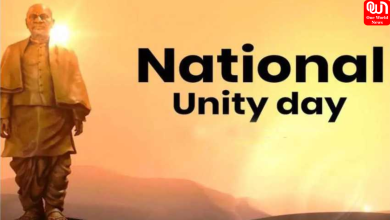India Beats China, Pak As World’s Biggest Arms Buyer; US, Russia Largest Exporters


India has become the biggest buyer of arms in the world, importing nearly three times as many weapons as its nearest competitors China and Pakistan. Indian imports of weapons increased by 111 % in the last five years and its share of total international arms imports increased from 7% to 14 %. The world’s top five arms importers now are India, China, Pakistan, United Arab Emirates and Saudi Arabia. This latest data on international arms trade was released by Stockholm International Peace Research Institute (SIPRI), a Swedish think tank. SIPRI was founded in 1966 as an independent think tank for research on conflicts, weapons, arms control and disarmament.
Russia is the main supplier of weapons to India and supplies 75 % of arms to India. However, India has of late tried to diversify its weapons sources by procuring arms from United States and other European countries. The US at 7%, became the second largest arms supplier to India, replacing Israel. The US has bagged defence deals close to $10 billion over the last decade. Earlier, Israel had a major share in the lucrative Indian defence market, primarily due to the Phalcon AWACS (Airborne Warning and Control Systems) aircraft. Russia will sell about 39 billion dollars of weapons to India in the near future and is expected to retain the top spot for the foreseeable future.
Arms imports in India have been on the upswing. The Indian Air Force (IAF), for instance, has selected several systems ranging from combat aircraft (Rafale MMRCA) to midair refuelers (Airbus A 330 MRTT), Boeing C-17 Globemaster III heavy lift transport aircraft, Lockheed Martin’s C-130J Special Operations aircraft, Russian Mi 17 V5 helicopters, 272 SU-30 MKI combat aircraft and so on. Arms imports from the U.S. include C-130J Super Hercules aircraft and P-8I maritime patrol aircraft among other mega defence deals. Agreements have also been reached with Russia for co-production of Multirole Transport Aircraft (MTA), Fifth Generation Multirole Fighter Aircraft, tanks and armour. The other deals on the anvil are for Apache attack helicopters, Chinook heavy-lift helicopters, P-8I maritime patrol aircraft and M-777 ultra-light howitzers.
[Best_Wordpress_Gallery gallery_type=”thumbnails” theme_id=”2″ gallery_id=”103″ sort_by=”order” image_column_number=”5″ images_per_page=”30″ image_title=”show” image_enable_page=”0″ thumb_width=”200″ thumb_height=”100″ popup_width=”800″ popup_height=”500″ popup_effect=”fade” popup_interval=”5″ popup_enable_filmstrip=”1″ popup_filmstrip_height=”70″ popup_enable_ctrl_btn=”1″ popup_enable_fullscreen=”1″ popup_enable_comment=”1″ popup_enable_facebook=”1″ popup_enable_twitter=”1″ popup_enable_google=”1″ watermark_type=”none” watermark_link=”http://web-dorado.com”]
The five largest global arms exporters are the United States (29%), Russia (27%), Germany (7%), China (6%) and France (5%). The total volume of world’s arms sales went up by 14%, says the Swedish research institute. The United States and Russia remain the main exporters, supplying more than half the world’s arms. The United States sold armaments to more countries than any other country during the past five years, Siemon Wezeman, Senior Researcher with the SIPRI Arms Transfers Program said.
The world’s top five arms importers are India, China, Pakistan, the United Arab Emirates and Saudi Arabia. Aircrafts made up the bulk of U.S. arms sales, while Russia focused on warships.
China has emerged as one of the fastest growing international arms exporter. China has over the years build up a strong Defence Industrial Base (DIB). China is selling arms like fighter jets, warships, missiles and smaller arms to countries like Pakistan, Bangladesh, Saudi Arabia, Turkey, Bolivia and Zambia. China has become the main supplier of arms to Pakistan. India’s lead over China in arms import can be explained by the fact that China has been successful in developing its own DIB.
What is of grave concern to India is that over half of the Chinese arms are bought by Pakistan, which indicates the growing cooperation between the two nations. India’s arch rival and nuclear power Pakistan increased its weapons acquisitions by 119 per cent.
SIPRI data revealed that India desperately needs to develop its indigenous arms industry. India has failed to build a robust defence industrial base (DIB). The lack of a strong DIB, unlike China, means India has to import over 65% of its arms.
The modernisation of India’s armed forces lacks a concrete strategic planning. A K Antony, India’s Defence Minister and the Ministry of Defence (MoD) must take a serious look into the issue. The Defence Research and Research Organization (DRDO), other Public Sector Undertakings (PSUs) and ordnance factories have failed to ensure that they are able to deliver weapon systems on time. Foreign Direct Investment (FDI) in the defence sector is still restricted to 26%.
Sources in the ministry of defence (MoD) told India Strategic defence magazine that the SIPRI report is ‘interesting, not surprising’. Several major systems have been ordered for all the three Services- Army, Air Force and the Navy. Deals for Boeing’s C-47 Chinook and Apache helicopters, Scorpene submarines, BAE Systems lightweight howitzers are still in the pipeline.
The famous Medium Multi-Role Combat Aircraft (MMRCA) agreement included the supply 126 multi-role combat aircraft to the Indian Air Force (IAF). As regards MMRCA, sources said that there was no delay from the Ministry of Defence (MoD). Hindustan Aeronautics Limited (HAL) which is the main integrator for the MMRCA project is still to coordinate fully with the French aircraft manufacturer of Rafale, Dassault International.
According to SIPRI, the withdrawal of U.S. troops from Iraq and Afghanistan is among the biggest reasons for the drop in military spending. Despite the decline in military spending over the years, the business of war remains a vibrant one. Samuel Perlo-Freeman, Director of the SIPRI Programme on Military Expenditure and Arms Production, said that while government military spending is waning in the United States and Western Europe, many developing countries are increasing their expenditures. The top 100 largest arms producers got 395 billion dollars in arms sales. Lockheed Martin, an American Fortune 500 company and the largest arms seller, alone accounted for sales worth 36 billion dollars.
The top 10 companies with the most arms sales are Lockheed Martin, General Dynamics Corporation, Raytheon, BAE Systems (a British company which is also the largest non-U.S. military contractor) and Boeing.
Image Courtesy : http://4.bp.blogspot.com/-gl7LFZwo-xk/TtaMLXa4E9I/AAAAAAAAAls/c6MTPy_PUT0/s400/T-90S_India.jpg
Image Courtesy : http://navaljourney.com/wp-content/uploads/2011/01/navy.jpg
Image Courtesy :http://cdn.erodov.net/portal//reviews/other/sukhoi-su-30-mki-x/Sukhoi%20Su-30%20MKI-2.jpg
Have a news story, an interesting write up or simply a suggestion? Write to us at info@oneworldnews.in







